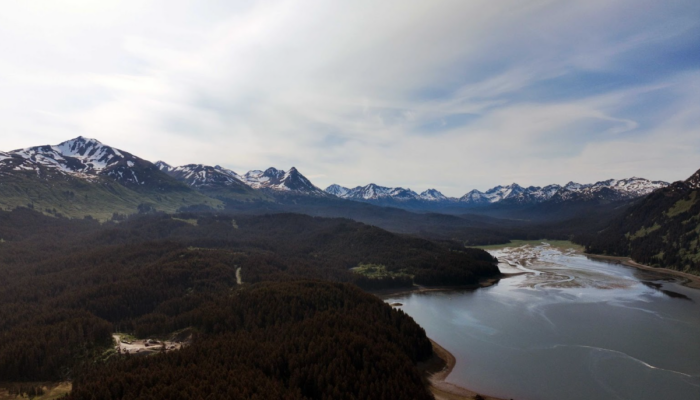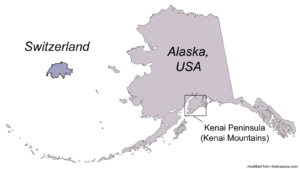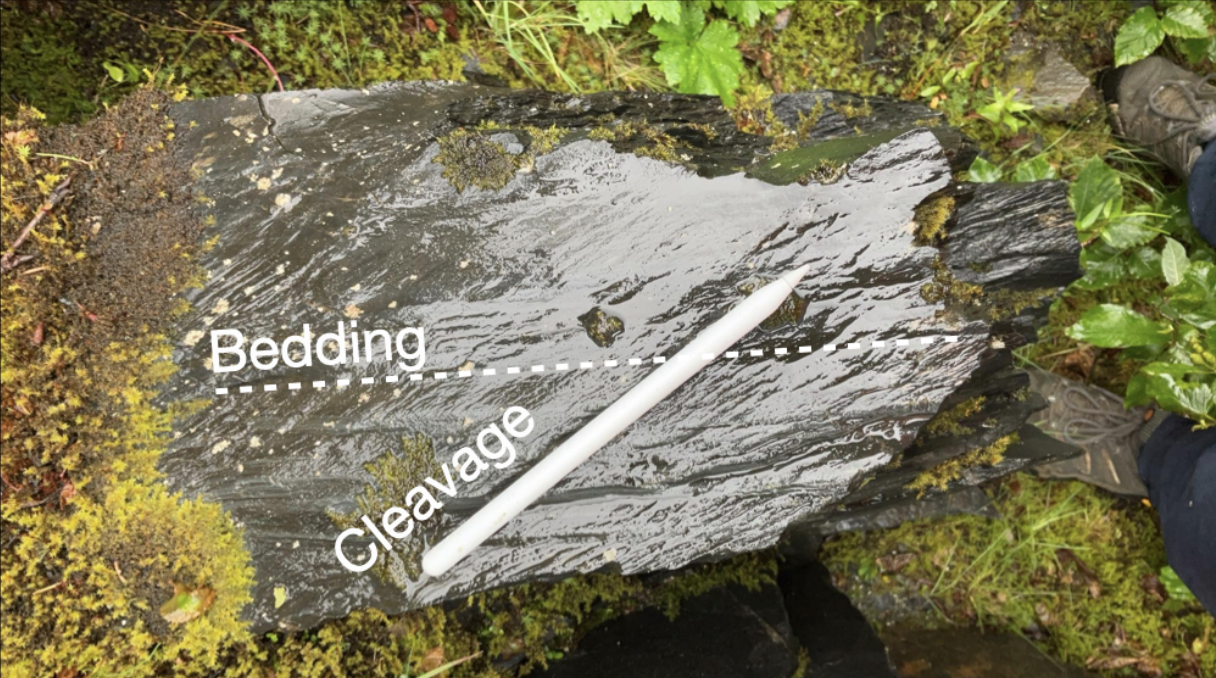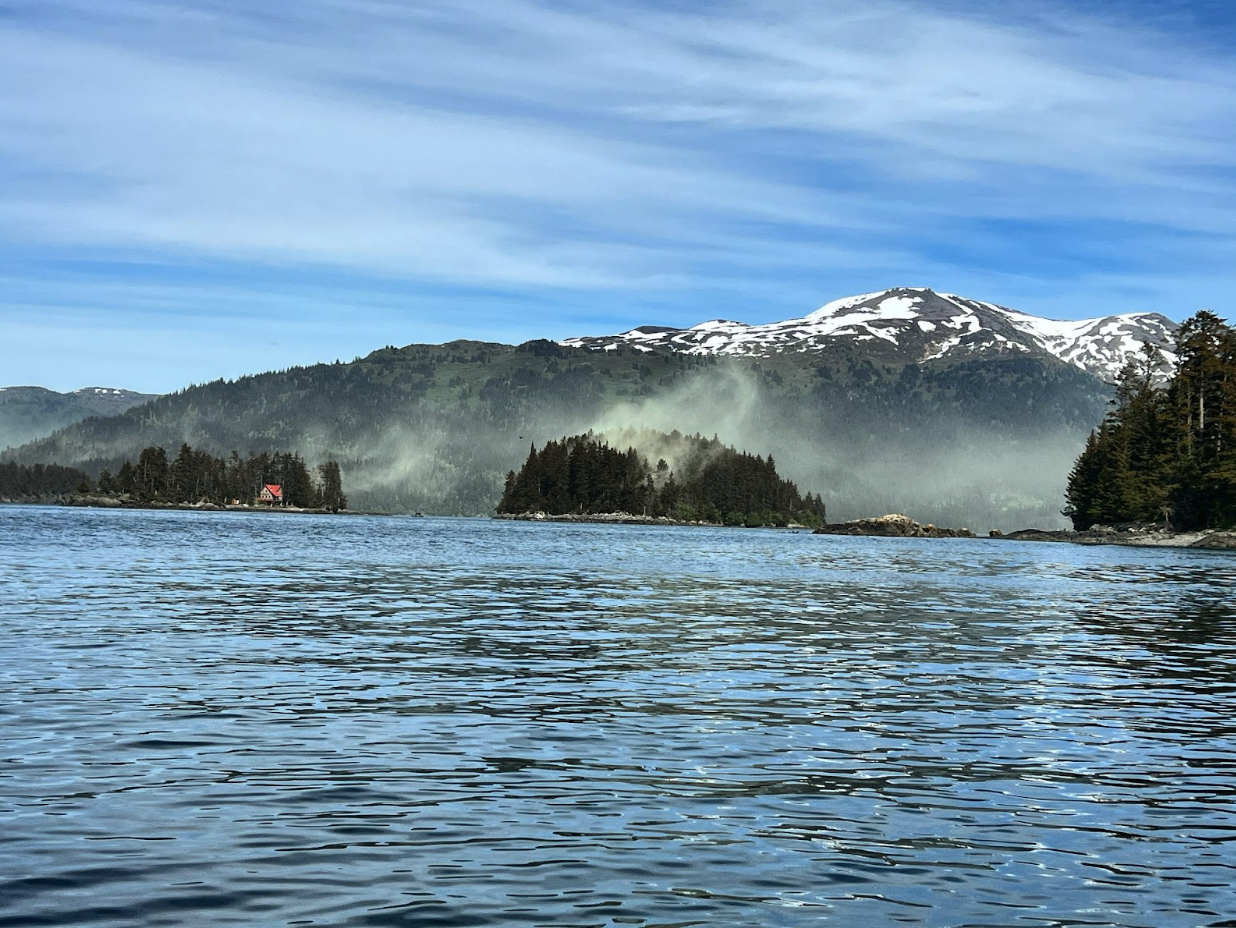
In this week’s blog post, one of our blog illustrators, Emily Hinshaw will take us on a journey to the faraway land of Alaska, which is well known for its rugged terrain, exciting wildlife, and being very remote. Despite these challenges, and many others, Emily loves this work and feels very lucky to be part of the research team which explores the geology and geodynamics of the region!
Alaska is a beautiful and wild state northwest of the continental USA. The rugged terrain, which appeals to many outdoor enthusiasts, is a direct product of tectonic convergence and accretion over time. The mountain range I’m working on for my PhD is roughly the size of Switzerland, and I cannot deny the irony of being an American who moved to Europe to study rocks in North America. At one point this summer, we were working in a mountain pass and the scenery could’ve convinced (almost) anyone that they were in the Alps. However, instead of the infamous lithological and tectonic heterogeneity of the Alps, the rocks I’m studying are mostly graywacke and shales (sometimes, a slate!). The Kenai Mountains are overwhelming a single unit of flysch (a term that originated in the Swiss Alps!).
This group really makes up for its abundance of quartz and clay minerals in its structural heterogeneity. One of the goals of this study is to understand how the Chugach flysch was thickened and assembled into the accretionary wedge. To do this, we’re looking for structural patterns, such as the relationship between bedding and cleavage, to understand regional deformation and kinematic histories. But the coolest component of this research is conducting fieldwork from a boat. Because of the intense terrain, we end up rafting through the Fjords to reach many of our outcrops. This adds an extra challenge and complexity to the field season, particularly when we need to start loading our rafts with rock samples.
Despite my research interests in structural geology and geodynamics, I couldn’t help but be fascinated by the glacial processes, too. This field season in Alaska was my first time seeing a glacier in person. It’s stunning to glimpse how quickly they are retreating. At Exit Glacier National Park (Seward, AK), the park service has signposts for the glacier’s position over the years, and let’s just say it’s a long drive in the car to get to 2023. But, fieldwork in Alaska is also accompanied by many other amazing natural experiences. We rafted alongside sea otters and seals, saw Bald Eagles flying overhead, and witnessed a pod of Orcas surface in the bay!
My favorite day of the field season was a sunny afternoon in late June. My supervisor and I were paddling around the bay looking for rock exposures along the shoreline. While we were on an outcrop, the trees suddenly realized that summer had arrived and within minutes, pollen was literally exploding off pockets of trees. The massive yellow storm that followed was utterly surreal. And then, my allergies kicked in, which led to several days of a runny nose. Despite these challenges, and many others, I love this work and feel very lucky to be part of this research team.





